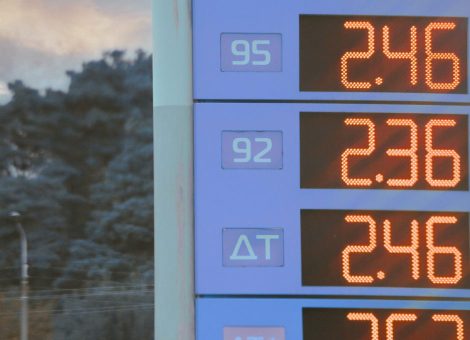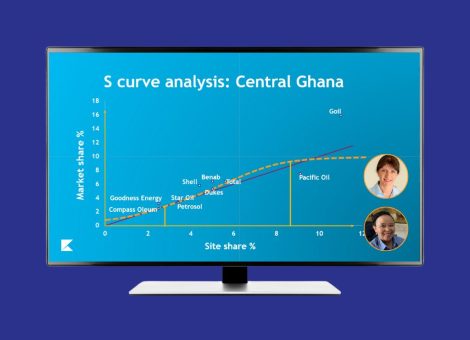Fuel pricing self-help during a state of emergency
Fuel and oil prices crash. Demand drops off a shelf. When either of these challenges are in play, it’s a dramatic situation for fuel retail. With complexities during a state of emergency ranging from damaged margin, potential store closures, and loss of manpower, it’s essential that fuel retailers continually assess their pricing processes and look for ways to minimize damage.
While the intricacies of these challenges may vary from retailer to retailer, here are five general tips for fuel pricing self-help during a state of emergency:
Make margin-aware pricing decisions
While experiencing a huge loss of demand, there could be a temptation among fuel retailers to fight for every gallon, and compete heavily on price.
It is, however, essential to understand your margin intricately, be cognizant of the number of deliveries you have, and your in-ground costs. With the possibility of longer timelines between your deliveries, it’s imperative that margin validation criteria are applied to your pricing rules to protect the business from pricing below cost.
Ultimately, always act within your own margin strategy, rather than being led by others. Be equally aware of what could appear to be price gouging, or opportunistic pricing and ensure that your strategy stands up to scrutiny even during extraordinary times.
Understand your market
Next, when assessing your own pricing rules, bear in mind that your competition will likely be making these key assessments too. For this reason, it’s essential to understand the nuances of your market as well as your own margins.
For example, are your competitors primarily COCO (company owned company operated) or a dealer with only one store? These have very different business models and this can affect their pricing decisions from one day to the next in times of extreme conditions, making them less predictable.
If you simply watch your competitors’ movements, you may think they are pricing aggressively. Understanding your local market and the elements it’s made up of, however, gives greater insight into individual actions and strategies.
This allows for strategic, non-emotional decision making within the remit of your own business constraints.
Refine your automation
In times of crises, the risk of key members of staff being unavailable is significant. If your overall strategy relies heavily on human intervention, you could be at a huge disadvantage. Instead, consider ways to be less reliant on the number of personnel and benefit more from automation.
When it comes to pricing, ensure your processes are as dynamic as possible, with minimal manual intervention. For example, you could use rules to limit the amount of times you change your prices in the day/week. Think how you could adapt these rule sets to reduce workload and to introduce further automation to free up your team’s time.
Check your variations carefully
In times of market stability, smart pricing tools are set to continually check for exceptions and anomalies, to weed out erroneous data. During a state of emergency, however, the reality could be as startling as this bad data.
In order for all valid inbound data to enter the pricing system, including larger price variations, your tool still needs to filter out erroneous information. In times like the current climate, however, you need to shift your parameters.
In the current environment, this data is no longer an error, but the state of the pricing environment today. So, unless you adjust your safety nets appropriately, and as needed, you could be damaging your ability to price in an automated fashion.
Don’t change your annual budget
Finally, no matter how exceptional the circumstances during a period of crisis, it’s essential to resist the temptation to change your original budgets within your pricing and reporting tools. Having the ability to see the original “fixed” budget, and then the revised business budget based on the conditions, is a much more valuable capability, ensuring accurate reporting against what was originally budgeted and also against what was reset to be the revised business plan.
While it’s logical to make changes to indicate that demand has eroded, and to annotate that data as to why (although as with 2008, it is doubtful that we will forget what happened in 2020!), entirely overhauling the budget without it being a company-wide strategy will skew your ongoing data and reporting.
The danger being that you draw incorrect conclusions in future based on those revisions. Ensuring that reporting for this year, and for next, is not adversely affected requires joined up thinking throughout the organization as to how the data will be assessed.
So, when does the new normal become reality?
Some markets may calm their pricing activities more quickly than others, but there may still be players that will actively adjust their pricing activity to capture more margin or to garner as much of the available volume as possible. As such, it is risky to assume you already understand market sensitivities during a state of emergency; you could ostracize yourself very quickly by getting it wrong.
To understand how markets will play out, there’s an incredible amount of data modeling work to do. How markets are released from their respective restrictions will also significantly impact their future paths. Ongoing data capture is needed to make these projections.
In conclusion — assess as you go along
There needs to be a period of time for behavior to settle into a “new normal” before you can assess whether the sensitivities in each micro market have altered. Depending on the longevity of the disruption period, creatures of habit will very likely go back to their old habits and old patterns will reestablish.
To see a consistent pattern starting to form, you need to be focussed on timely, quality data and precise, objective analysis. Fuel retailers need a clear strategy for reviewing and assessing this data to conclude that a reliable pattern has been established, and to agree on any changes to their pricing strategies moving forward.
At Kalibrate, we can help you to master unprecedented market volatility through a combination of AI-powered decision making and human consultancy. With decades of expertise in the fuel retail and convenience industry and robust pricing optimization tools, Kalibrate can help you truly optimize your fuel pricing during times of emergency, and beyond.
Read more articles about:
Fuel pricingSubscribe and get the latest updates
You may unsubscribe from our mailing list at any time. To understand how and why we process your data, please see our Privacy & Cookies Policy
Related blogs
Fuel pricing
Fuel pricing by exception: When do analysts actually analyze?
Managing fuel prices can be time-consuming, especially when analysts spend much of their day on routine tasks....

Fuel pricing
Middle East / Africa - Fuel network planning: Critical insights
Join our team as we look at the key points of insight that fuel network planners need to consider when making...


